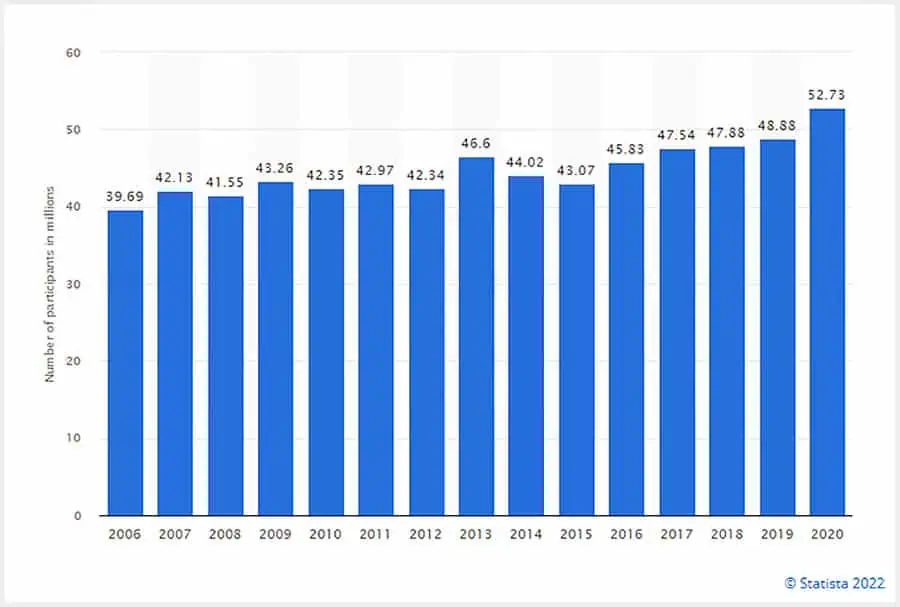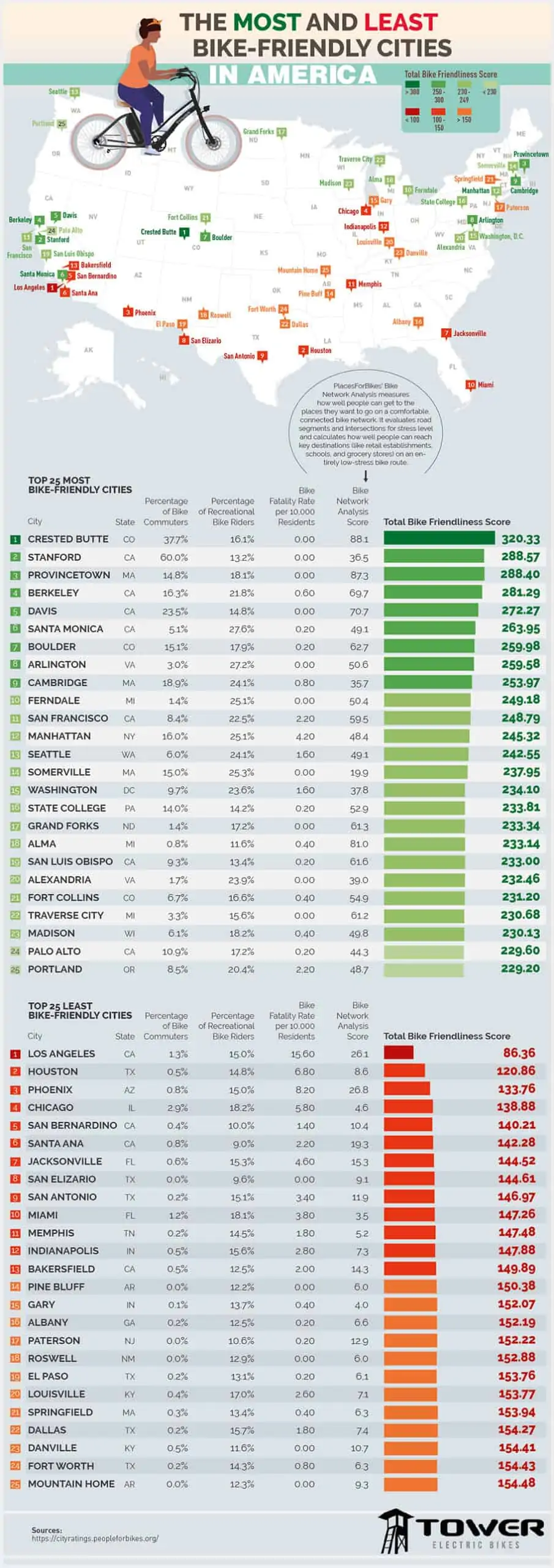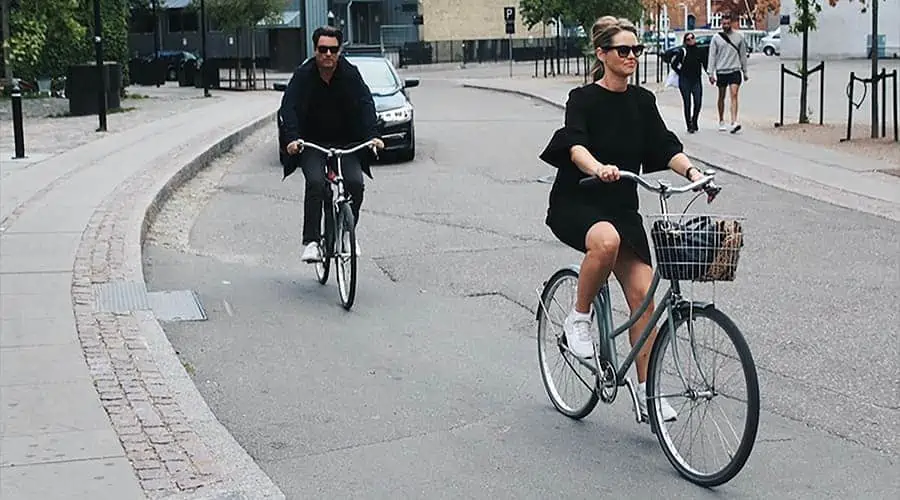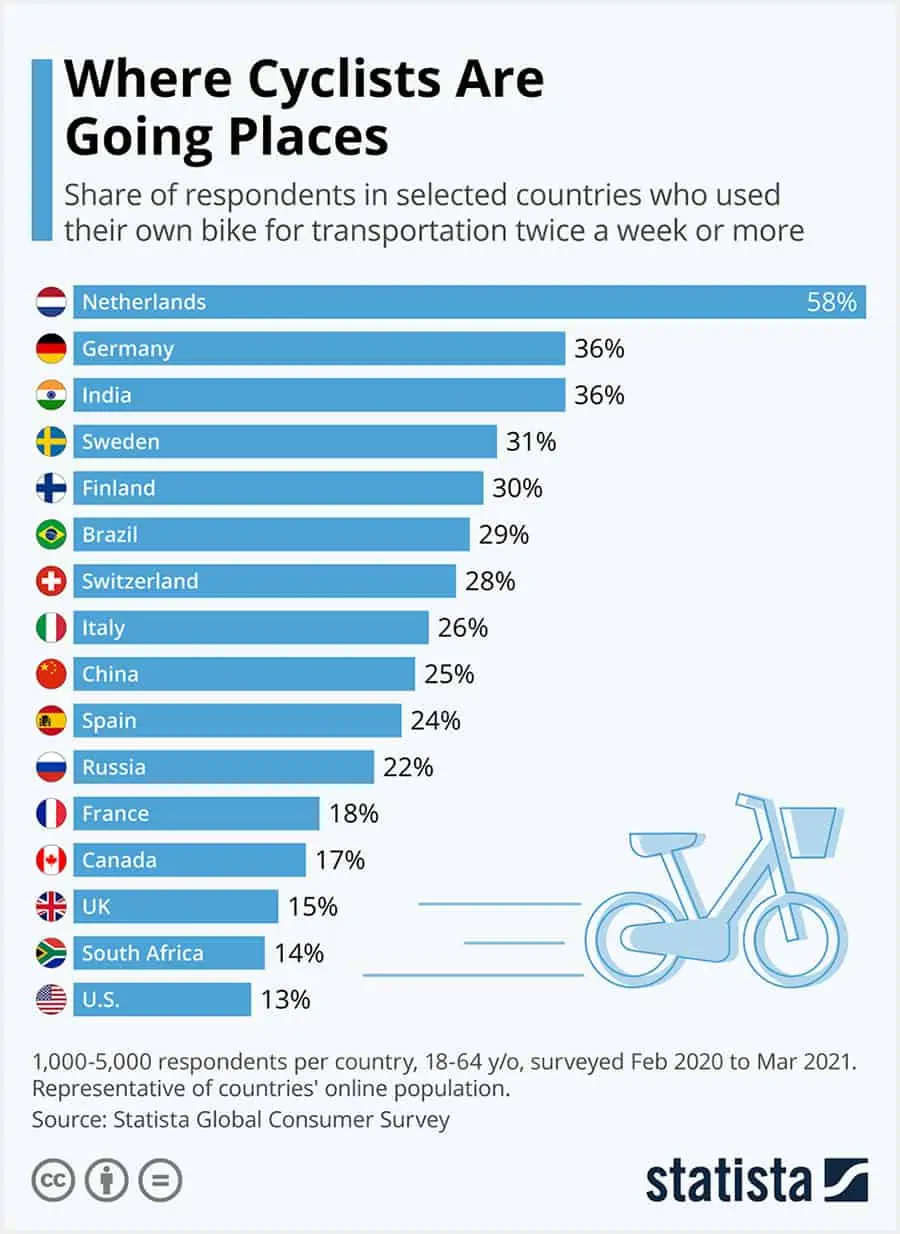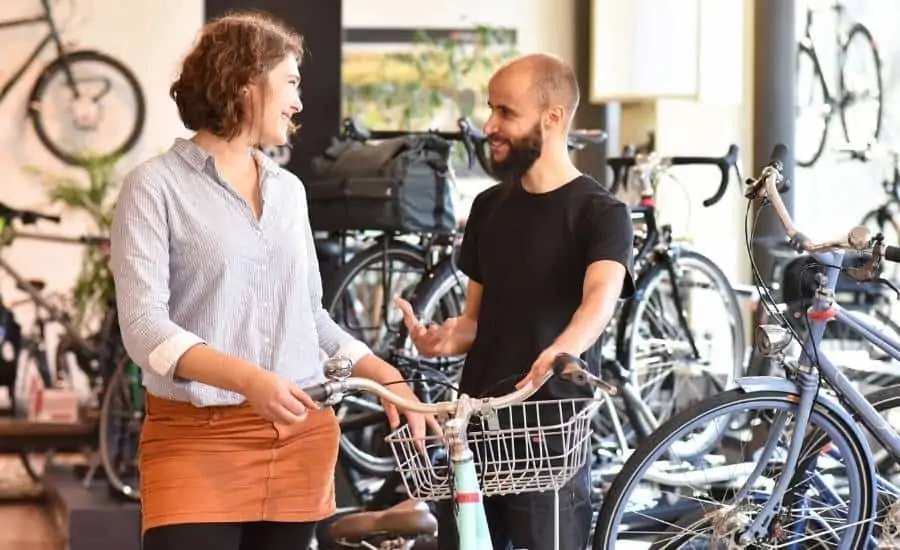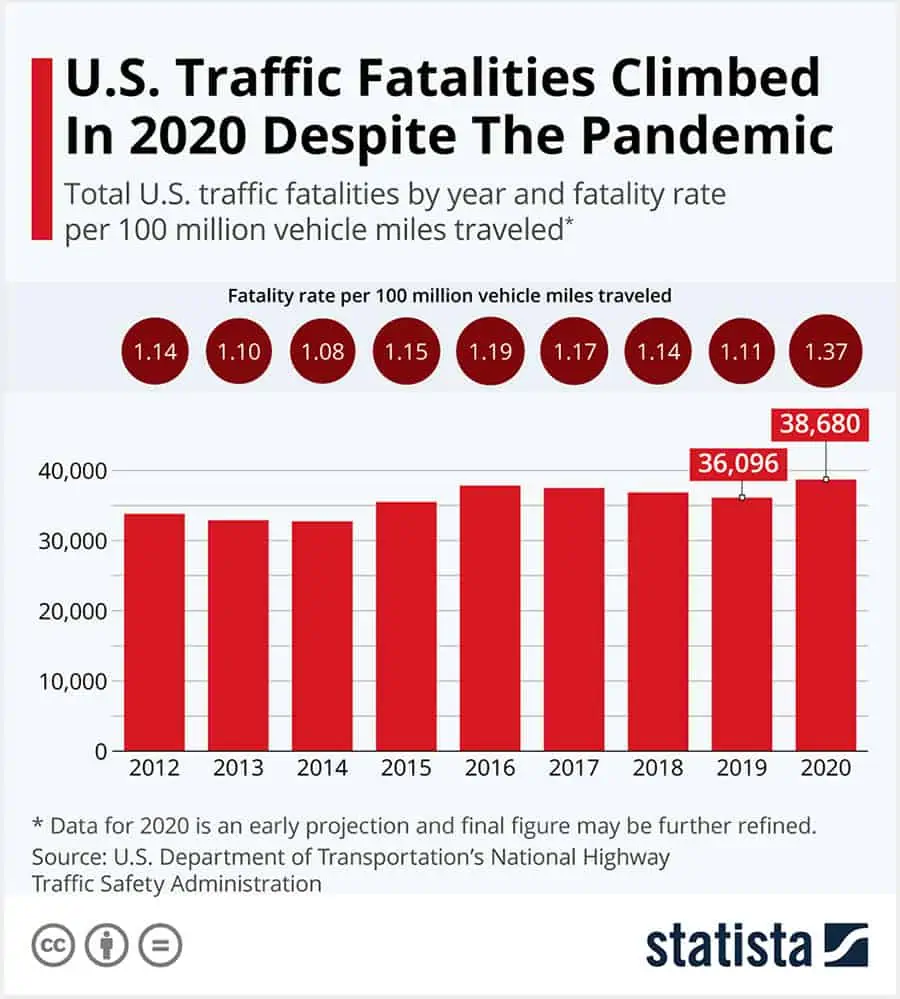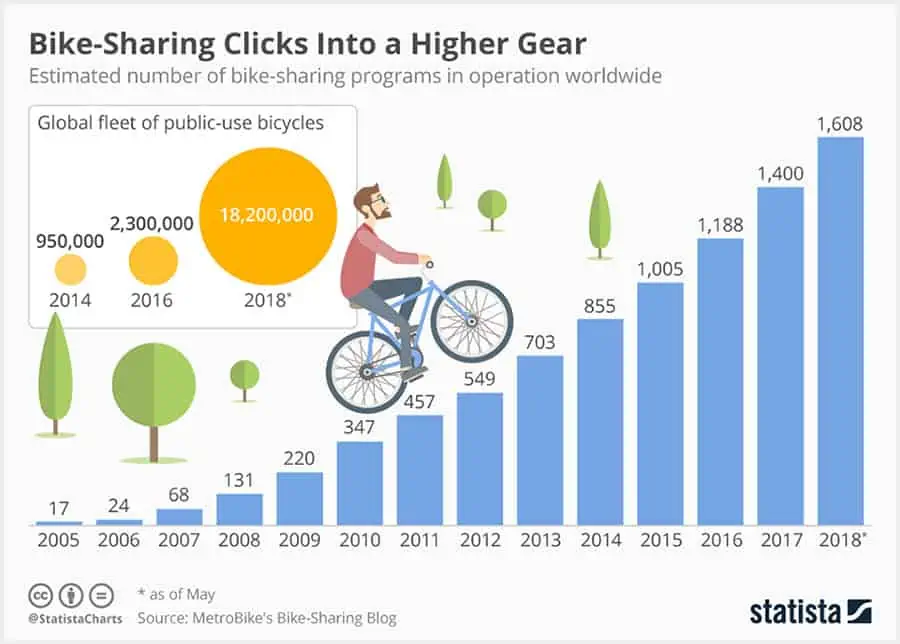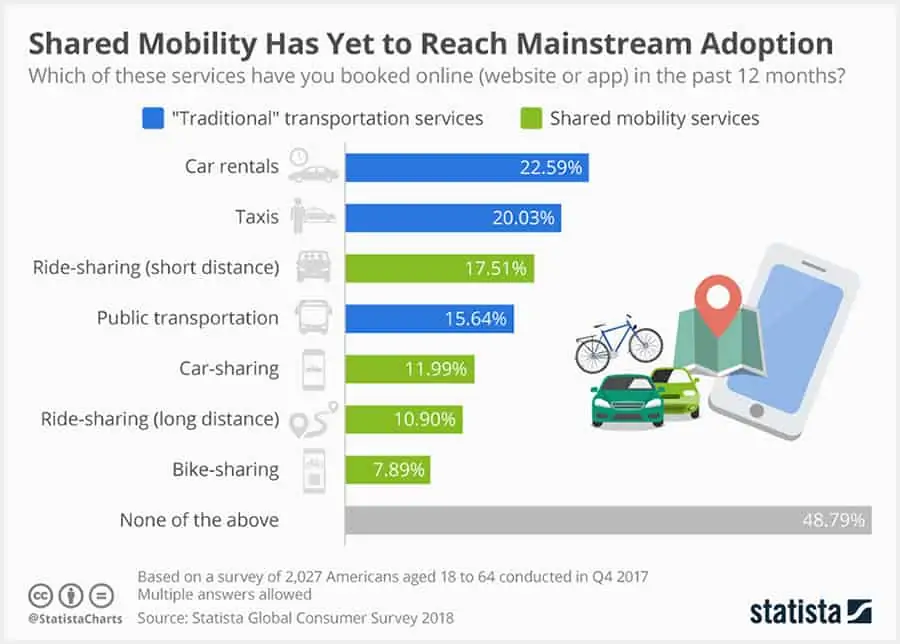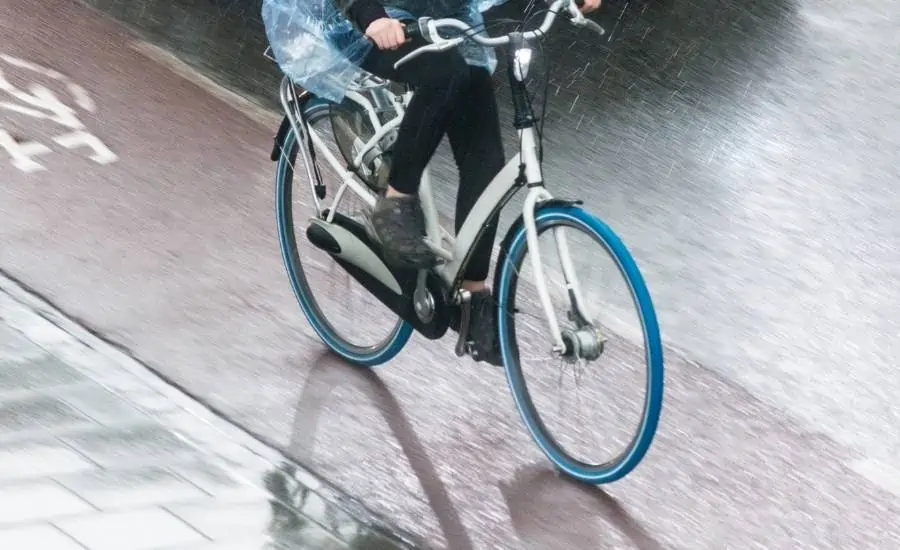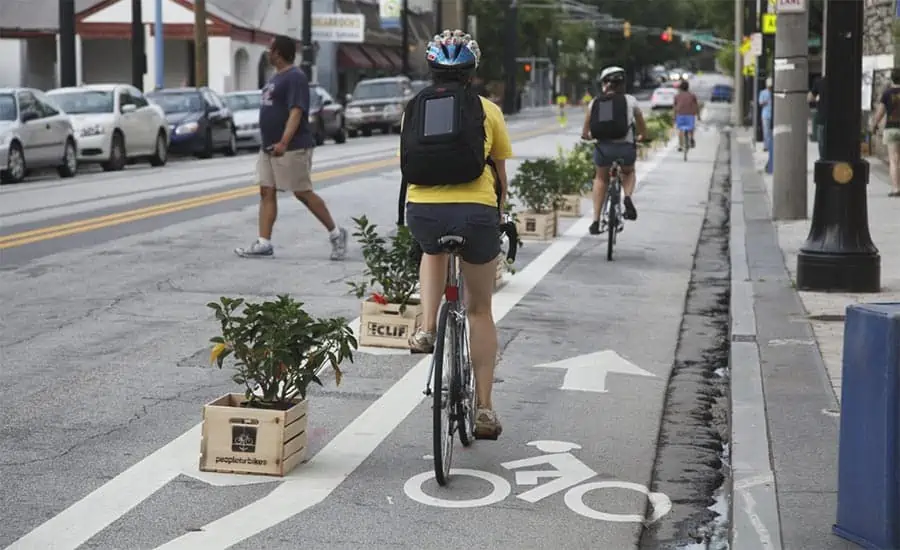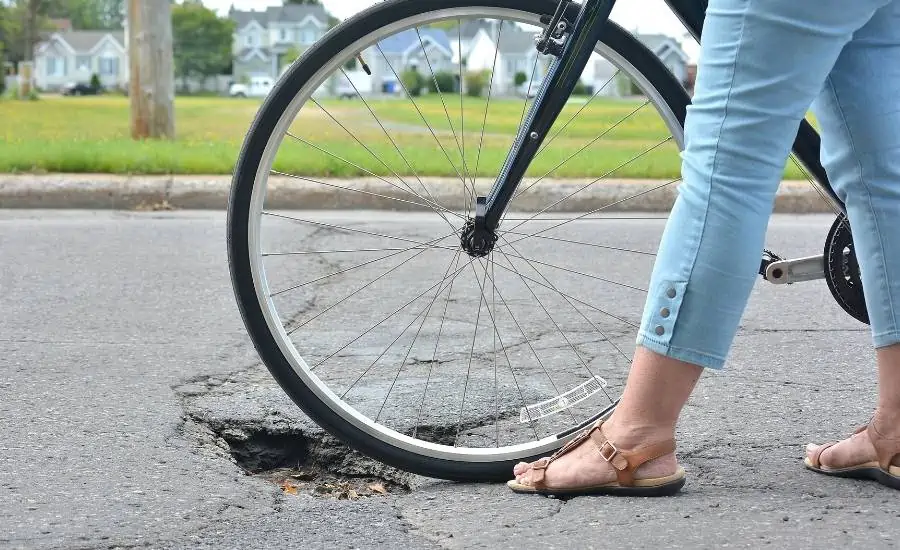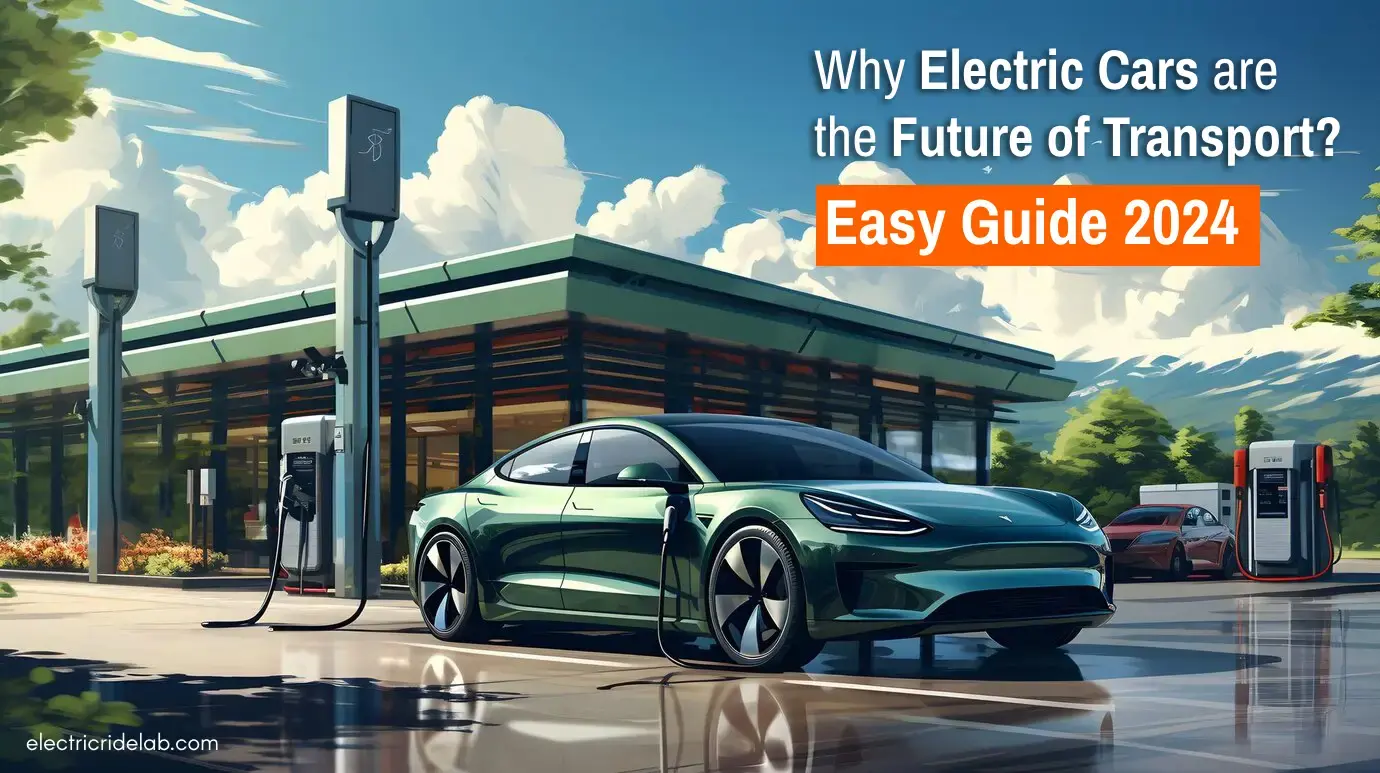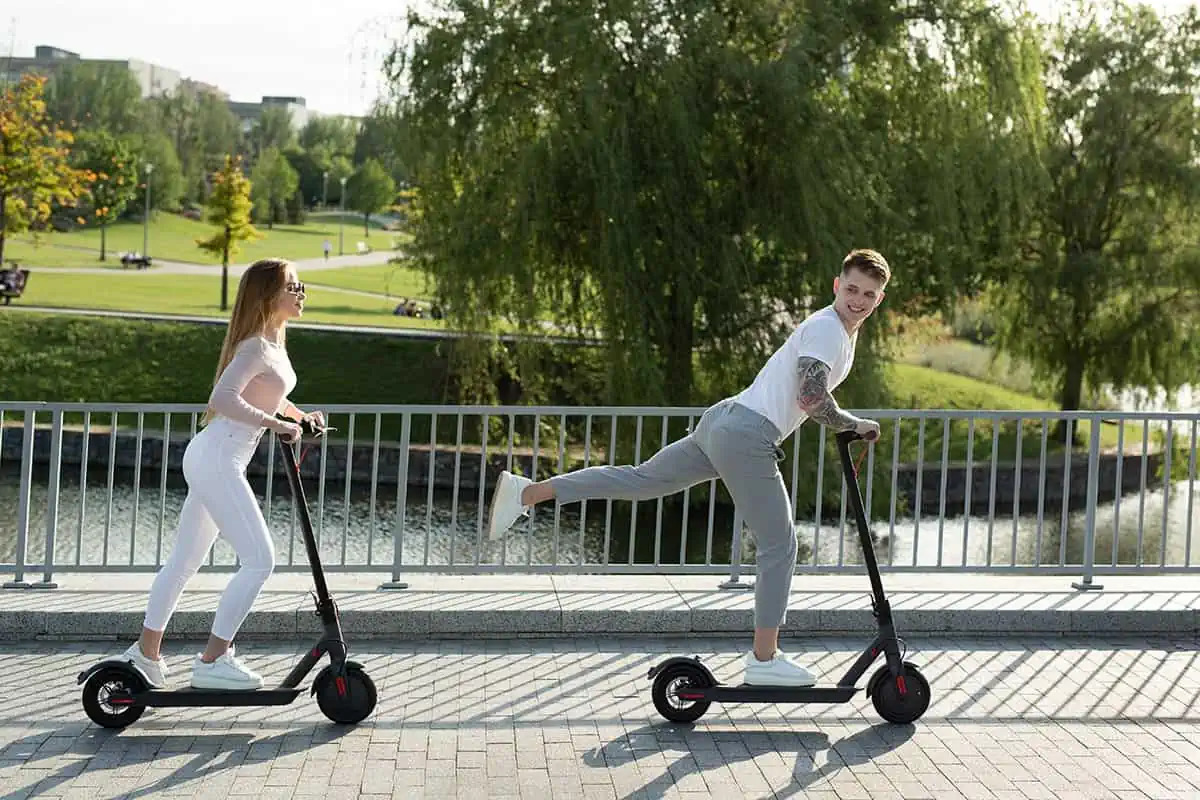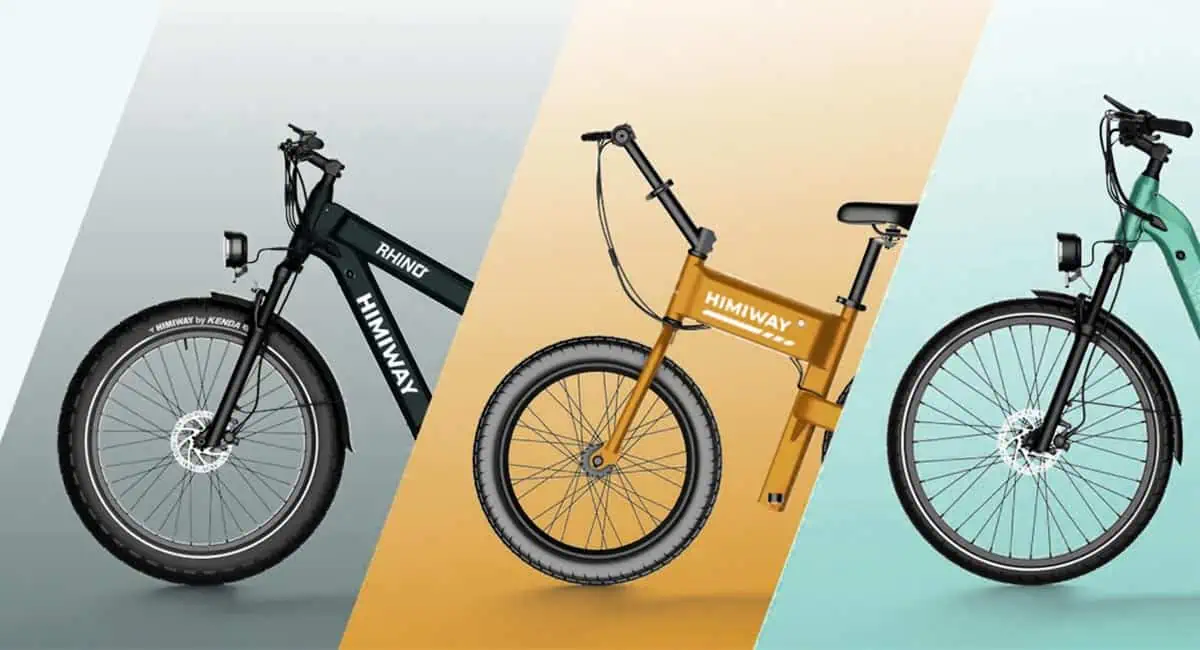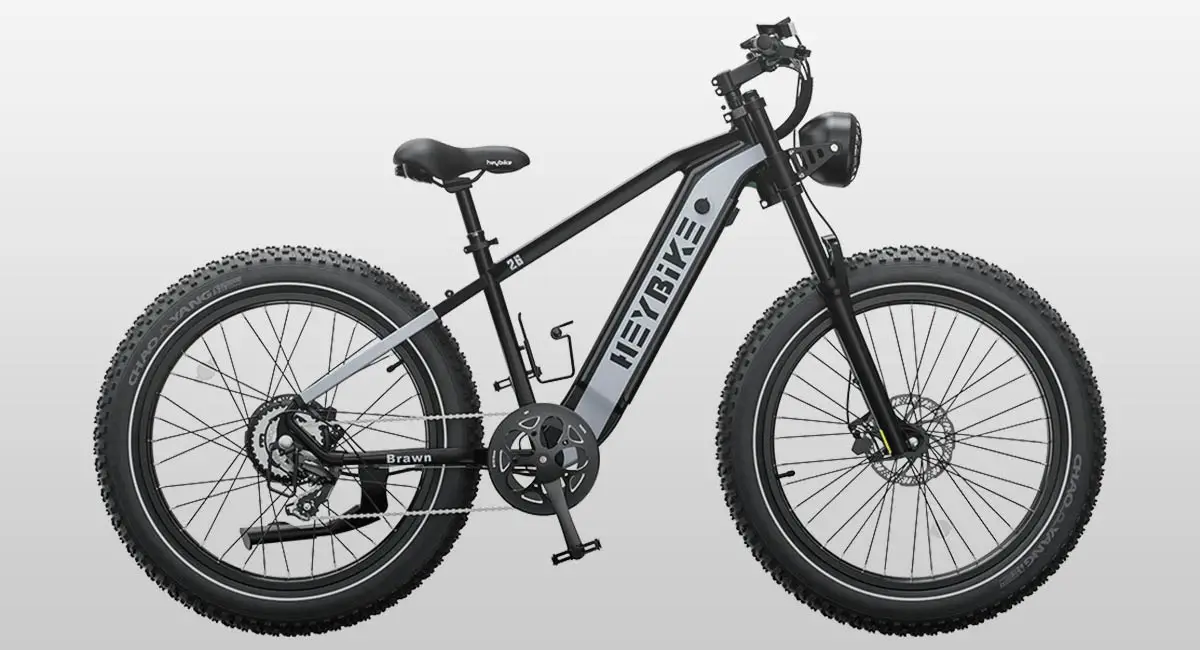There’s no denying the impact cycling has had on cities around the world. From Copenhagen to Amsterdam, Paris to New York City, these are just some of the places that have embraced cycling as an integral part of their transportation systems. The COVID-19 pandemic only made this trend more pronounced. In fact, according to Statista, the number of people aged 6 years or older who cycled in the United States was estimated at 52.73 million in 2020, up from 48.88 million in 2019.
Source: statista
As we look toward the future, it’s clear that cycling will continue to play a significant role in shaping urban mobility. Cities around the globe are looking to build better bike lanes, increase safety measures, and encourage residents to get out of cars and onto bikes.
Despite the efforts being taken by some cities within the US to upgrade their bicycle infrastructure, many others still struggle to achieve adequate levels of bicycle access. For the most part, the latter group are not considered “top cycling cities” because they don’t foster enough biking culture among its citizens.
Continue reading to learn why a city may not be considered a top cycling city.
Also Related:
Which City is Not Considered a Top Cycling City
Cities that offer easy access to high quality bicycle infrastructure—and a strong tradition of riding—are generally considered to be top cycling cities. Crested Butte, Colorado, is reputed to be the most bike-friendly city in America. In contrast, Los Angeles, California, is widely acclaimed as the least bike-friendly city in the country. For one, the city lacks a cohesive network of protected bike lanes, which is partly responsible for the high cyclist fatality rate.
“A top cycling city is one that fosters a friendly culture towards cycling as well as providing a wide range of facilities to encourage cycling”
The reasons for this divide are varied but often reflect a lack of apathy towards cycling. Notwithstanding, we’ve highlighted some key factors that can help explain why a city might not be considered a top cycling city.
why a city might not be considered a top cycling city
1. A Lack Of Cycling Culture
One of the major reasons why a city does not qualify as a top cycling city is because it lacks a robust cycling culture. This invariably means there aren’t enough cyclists to make cycling a viable mode of transport. The best cycling cities have a liberal culture that promotes cycling. Residents feel comfortable riding bicycles and see them as a normal form of everyday travel.
Keep in mind that a city without a strong cycling culture is unlikely to embrace cycling infrastructure. Residents may be opposed to initiatives that promote cycling like mapping out dedicated paths and installing new cycle tracks. They may also resist pieces of legislation that aim to improve conditions for cyclists.
Cycling enthusiasts are opposed to relocating to cities that do not foster a good cycling culture.
Also Related:
Why is Public Transportation So Bad in the US
2. Poor Infrastructure
A second reason why a city isn’t considered a top cycling city is due to poor bicycle infrastructure. It could be due to a lack of designated paths, proper signage, secure storage areas, or any of the other myriad of features that would make cycling more accessible. These features are vital if you want to encourage people to cycle. Without them, cycling becomes unsafe.
In order to improve the infrastructure, you must first understand what makes up a good cycling environment. One of the main elements of a great cycling environment is a network of bicycle routes that run throughout the city. These routes should be separated from motorized traffic and should be clearly marked. They should also be designed to accommodate all types of cyclists, including children, seniors, and those with disabilities.
Unfortunately, many cities do not invest enough money into improving these aspects of their infrastructure. As a result, they fail to meet the needs of both commuters and recreational riders. It’s sad to think that a city doesn’t have an adequate network of cycling infrastructure. What’s worse is the failure to maintain existing facilities. When this happens, it creates a dangerous situation for cyclists.
Thankfully, many cities nationwide are making giant strides in terms of building better cycling infrastructure. Some of the best examples include Portland, Oregon; Minneapolis, Minnesota; Eugene, Oregon; and Seattle, Washington.
3. No Bike Shops
Another factor that contributes to a city being unable to claim the title of a top cycling city is the absence of bike shops. In most cases, bike shops play an important role in encouraging residents to ride bikes. They provide information about safe cycling practices and offer repair services. If a city has very few or no bike shops, then it will struggle to attract cyclists.
If you want to see how much of a cycling culture exists in a given city, simply visit any local bike shop. If the staff there are knowledgeable about bicycles, then chances are there are plenty of cyclists in town. However, if the staff don’t know anything about bicycles, then you’ll probably find that the number of cyclists is low.
The absence of a cycling community has a way of discouraging people from riding bikes. This means that bike share businesses will struggle to attract customers. The only way to combat this problem is to build a stronger cycling community. If you’re an avid cyclist, then you’ll want to get involved by volunteering at your local bike shop. You can help out by offering advice to new cyclists, teaching others how to fix their own bikes, or even fixing bikes yourself by opening your own bike shop.
4. High Vehicle Traffic
Source: statista
Vehicle traffic is another major issue that prevents a city from claiming the title of a top cycling city. Many cities have high vehicle traffic because they are located near highways, airports, or large urban centers. For example, New York City, Los Angeles, San Francisco, Chicago, Boston, Philadelphia, Atlanta, Houston, Dallas, Phoenix, Miami, and Denver are some of the largest metropolitan areas in the United States. All of them are located within close proximity to highways.
High vehicle traffic can cause problems for cyclists. First, it can make it difficult for them to travel through certain parts of the city. Second, it can increase the risk of accidents involving vehicles and bicycles. Third, it can lead to increased air pollution.
Bike paths often suffer damage due to heavy vehicular and pedestrian usage. This can result in dangerous conditions causing accidents that could potentially injure cyclists or pedestrians alike. The lack of protected bike lanes forces cyclists to share the road with fast moving motor vehicles. This increases the likelihood of a collision. Furthermore, cyclists are often forced to travel through dangerous intersections and crosswalks.
Top cycling cities with heavy vehicle traffic have managed to create safer environments for cyclists. For example, Portland, Oregon, has created protected bicycle lanes throughout its downtown area. These lanes allow cyclists to travel safely without having to worry about getting hit by cars.
Also Related:
Bike Sharing Statistics – Updated 2024
5. No Bike Share Program
A lack of bike sharing programs can lead to a decrease in the number of cyclists in a city. If a city has a limited number of cyclists, then it makes sense that it wouldn’t consider itself a top cycling city. The best way to attract more people to cycle is through a bike share program. These programs allow users to rent bikes at low rates or even for free. They also encourage new riders to get involved in cycling.
As of May 2018, there were an estimated 1,608 bike-share programs available worldwide.
Source: statista
Unfortunately, bike-sharing in the United States is yet to catch on.
Thankfully, the future looks bright for the US bike sharing market as several companies have launched their own systems. Motivate is unarguably the biggest operator of bike shares in the country. They operate Capital Bikeshare in Washington D.C., Divvy in Chicago, Citi Bike in New York City, and Ford GoBike in San Francisco.
Cities without an operational bike share system may likely not be considered top cycling cities. Many top cycling cities have gone beyond implementing innovative bike share programs to introducing income-based subsidy schemes. This is especially important when considering the fact that most people cannot afford the high cost of registering a bike share membership.
Source: statista
6. Safety Concerns
Safety concerns are one of the biggest reasons why some cities aren’t considered top cycling cities. In fact, safety is one of the most important factors when determining whether a city is a top cycling city or not.
For the most part, a top cycling city must have safe roads and sidewalks for cyclists to ride on. Unfortunately, some cities lack proper roadways for cyclists, proper street lighting, sufficient road markings, and other safety measures.
Safety may seem like an obvious concern, but it isn’t always taken seriously by city leaders. For example, many streets in Los Angeles lack bike lanes and are too narrow for cyclists to safely travel on them.
7. Poor Weather Conditions
Weather conditions play a big role in determining if a city is a top biking city. Cyclists often choose to avoid riding during rainy days. As such, they tend to stay indoors instead of venturing outdoors.
Cyclists should be able to enjoy the great outdoors without having to worry about getting wet. Similarly, riding under the sweltering heat of the sun can also be quite uncomfortable. That said, cities with extreme temperatures may not be considered top cycling destinations.
An ideal temperature for a top cycling city would be between 68 degrees Fahrenheit (20° Celsius) and 86 degrees Fahrenheit (30° Celsius). Cities with these kinds of temperatures are generally considered warm enough to make cycling enjoyable. Of course, there will be the occasional hot spell where it gets extremely hot outside or rain falls at unexpected times. However, those occurrences shouldn’t prevent you from enjoying your daily commute.
8. Not Enough Shared Space
If a city lacks a lot of room to ride safely, then cyclists will be forced to follow closely behind drivers. Since most roadways are usually too narrow for two vehicles to pass each other, this puts both the driver and the cyclist in danger since the car is likely to swerve to avoid being hit by someone else.
The absence of dedicated bicycle lanes forces cyclists onto the street itself and puts them at risk of being hit by fast moving motor vehicles.
9. No Proper Separation
Cyclists and pedestrians can be hard to identify because they move along with the crowd. When trying to walk down a sidewalk lined with buildings, cyclists could accidentally step onto the pavement when they are confused about where they should go. As such, streets without sidewalks tend to lead to less accidents between cyclists and pedestrians than ones where sidewalks are present.
Also Related:
How Fast Do Electric Scooters Go? Expectations vs. Reality
10. Motor Vehicles Going Above the Speed Limit
Most cities require motorists to drive within certain speeds during specific hours. These regulations exist for cyclist safety but drivers frequently ignore these rules. Since roads in cities without sufficient separated pathways for bikers are generally congested with people driving too fast, they tend to cause unsafe conditions for cyclists. These dangerous situations force cyclists to contend with speeding drivers who carelessly overtake them while barely visible from behind.
11. Drivers Without Headlights
Drivers often disregard basic common sense when traveling after dark. Cyclists can get hurt or even killed from careless driving. City streets can be very dark at night, especially in areas that lack bike infrastructure. Lack of lighting makes it difficult for motorists to identify and judge distances when overtaking cyclists. This leads to close calls as drivers run into cyclists unaware that they’ve just passed them by.
12. Road Hazards
In many cities, drivers have been known to park their vehicles illegally on roadways which obstruct cycling lane access. Other times, drivers open their doors suddenly right next to cyclists, sometimes forcing them off their bikes. Without laws in place to prevent such behaviors, drivers are often careless about their presence on public land.
13. Poor Enforcement
Most cities try to keep roads safe for all users including cyclists. However, if police officers do not take any action against negligent drivers, then cyclists can become victims of reckless driving.
Also, if there is no law to punish negligent behavior, cyclists may face an additional problem in that they’re discouraged from reporting incidents with cars. In some cases, drivers simply drive away leaving cyclists stranded on side roads with nowhere to turn.
Without clear signs that say “no parking” or “this area is reserved for bicycles”, drivers can easily put cyclists in needless trouble.
14. Confusing Street Signs
Cyclists are often confused about where the proper routes are because of ambiguous signage. Also, some streets are confusingly marked with misleading signs.
These misleading signs can confuse cyclists into thinking that certain streets are designated only for specific modes of transportation. Instead, these roads should actually serve everyone equally.
Misleading street signs cause both bicyclists and motorists to end up wasting time looking for nonexistent routes. Often, there are several different routes to reach the same destination, making cyclists wonder how anyone finds his or her way around in the first place.
As a result, most people opt to stick to major thoroughfares instead of exploring quieter neighborhoods. Such confusion discourages exploration of less popular parts of town.
Worst Cycling City in America
As you must have seen earlier, Los Angeles beat the likes of Houston, Phoenix, Chicago, and San Bernardino to top the chart of least bike-friendly cities in America. Los Angeles is home to an estimated 3.98 million residents. Yet, cycling in the ‘Creative Capital of the World’ accounts for 0.6% of all work commutes.
The city’s infrastructure is lacking. There are no dedicated bicycle paths or bike lanes along its major thoroughfares. In addition, most roads within the city are designated as “one-way” which makes it difficult for cyclists to navigate through traffic. Cyclists are forced to deal with heavy traffic and unpredictable drivers at nearly every intersection.
In short, LA lacks adequate infrastructure for cyclists. LA’s abysmal rating has been attributed to the fact that the city has very few protected bike lanes. Cyclists in Los Angeles face more risks than any other city in America. For one, there’s inadequate shared space for cyclists. Drivers don’t give much space to cyclists while making turns. They also speed up and slow down abruptly without giving much notice to cyclists.
This leads to dangerous situations for cyclists. Some of the worst scenarios involve a cyclist being hit by a vehicle on a busy street. Furthermore, the lack of proper separation and sidewalks for pedestrians and cyclists means that they share the same space. This leads to close calls and accidents.
LA is infamously known for its fallen road signs, potholes, and broken street lights. The city is notorious for illegal parking and aggressive driving. These factors combined make it unsafe for cyclists. Despite efforts by the city government to curb this behavior, motorists continue to break rules and drive recklessly.
Don’t get us started on LA’s infamous traffic congestion. It takes hours to travel just a few miles. And when you do finally arrive at your destination, you’ll find yourself stuck in gridlock.
While LA’s traffic problems may seem like an issue for drivers, they’re actually a huge problem for cyclists. When you add up the time spent commuting and the stress caused trying to navigate through traffic jams, it becomes clear why LA isn’t considered a top cycling city in America.
Not everything is bad about LA though. The city’s bike share program – Metro Bike Share – is dubbed as the first of its kind in the United States of America. The program is under the purview of the Los Angeles County Metropolitan Transportation Authority. Essentially, Metro Bike Share is a strategic partnership between the City of Los Angeles and Metro.
Metro Bike Share is acclaimed for its unique regional administrative structure and regional accessibility. L.A residents living in Central L.A., Downtown L.A., Hollywood, West L.A., and North Hollywood have access to the Metro Bike’s fleet of bikes 24/7, 365 days a year. Users simply purchase a pass online or via other designated channels. Once purchased, users can then unlock Metro bikes and find stations via the mobile app.
Users are constantly reminded of the need to adhere to safety precautions while riding their bikes. Riders below 18 years old are mandated under California law to wear helmets. However, riders over 18 years old are free to choose whether or not they want to wear them.
As far as safety equipment goes, we recommend wearing helmets to reduce the risk of head injuries. If you want to return your bike after your ride, you only have to drop off the bike at any station. As a rule, never leave your bike unattended.

